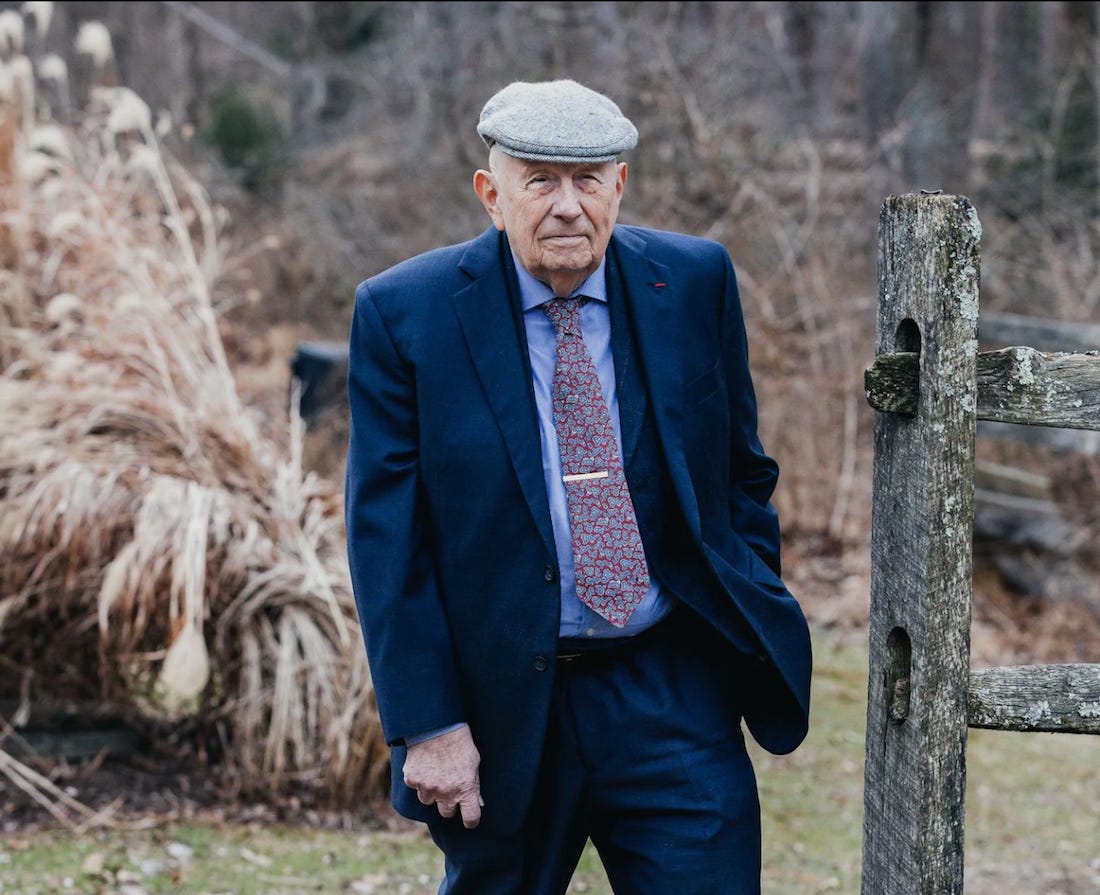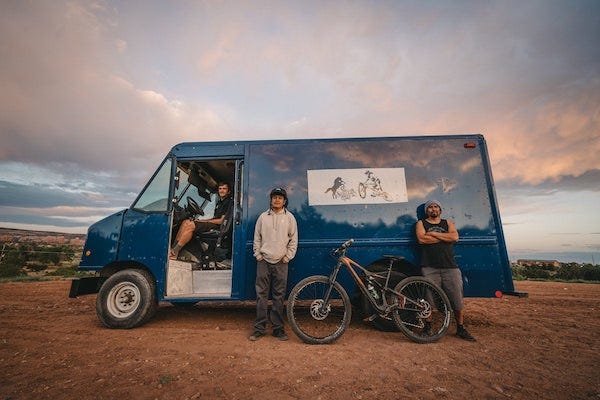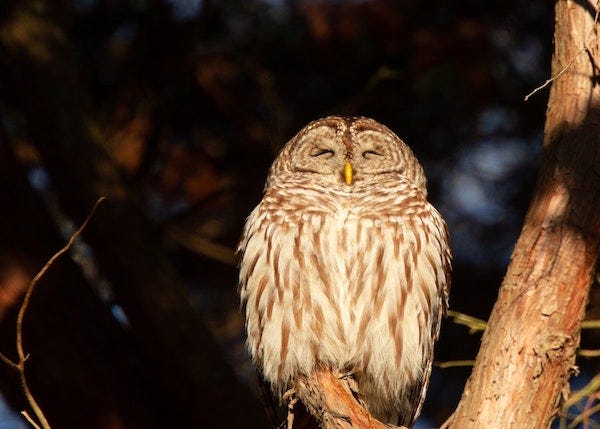The Weird Times: Issue 38, January 31, 2021
“Trump was the perfect target in a lot of ways: his vanity, narcissism made him a natural target to recruit. He was cultivated over a 40-year period, right up through his election.”—Craig Unger
“Say all you want about the horrors of this last year, but we have reached those outmost bounds. We have accomplished more than I would have imagined possible, and it’s been a global effort. It’s astounding. It’s thrilling. I was about to say it’s miraculous, but that’s not right. I don’t believe in miracles. It might sound a little fancy, but I believe in science. I believe in our capacity to endure and overcome.”—Stanley Plotkin
‘I was lucky to find this vaccine anywhere’ Stanley Plotkin, legendary vaccinologist, on the historic development and chaotic distribution of covid-19 vaccines, as told to Eli Saslow, Washington Post, 1/27/21
I’ve been so focused on helping to develop these vaccines that I barely thought about the mechanics of getting it myself until this month. How can our process be this complicated? I’ve been calling around now for the last several weeks. I could not find out where, or when, or how to receive a vaccine. I didn’t get anywhere.
I’m 88 years old. I’m in the priority group, and I qualify by all the Phase One recommendations. That should be enough. I don’t want to jump ahead of anyone in the line. I don’t want to call somebody up on the phone and say: “You know, I actually consulted on this vaccination process. I wrote the textbook on vaccines.”
If I’m not able to get in through the normal channels, that means a lot of people like me are not getting in, and that’s a big problem. We shouldn’t be experiencing this level of chaos in a developed country at a time like this.
+++
The Perfect Target: Russia cultivated Trump as asset for 40 years – ex-KGB spy, David Smith, The Guardian, 1/29/21
The KGB ‘played the game as if they were immensely impressed by his personality’, Yuri Shvets, a key source for a new book, tells the Guardian
Donald Trump was cultivated as a Russian asset over 40 years and proved so willing to parrot anti-western propaganda that there were celebrations in Moscow, a former KGB spy has told the Guardian.
Yuri Shvets, posted to Washington by the Soviet Union in the 1980s, compares the former US president to “the Cambridge five”, the British spy ring that passed secrets to Moscow during the second world war and early cold war.
Now 67, Shvets is a key source for American Kompromat, a new book by journalist Craig Unger, whose previous works include House of Trump, House of Putin. The book also explores the former president’s relationship with the disgraced financier Jeffrey Epstein.
+++
Tree Justice? Lawmakers Looks to Revive Forests in Washington Cities with Eye on Environmental Disparities, Levi Pulkkinen, Investigate West, 1/24/21
Broadly, cities aren’t well-equipped to manage the forests already within their borders, or cultivate new ones in underused open space they acquire.
Rep. Bill Ramos, D-Issaquah, contends the state’s Department of Natural Resources may have just the tools to help, and has introduced legislation that would enable the department to deliver guidance, grant money and other resources to cities interested in improving urban forests. The legislation gets its first hearing today in the House Rural Development, Agriculture and Natural Resources Committee.
Ramos, a 30-year U.S. Forest Service veteran, watched as an Issaquah City Council member as his city tried to figure out how to manage timberland that had been folded into the city parks system. They lacked the know-how to care for swaths of forest that, untended, would collapse.
“Towns own a lot of green space to help protect their community, but they don’t have the expertise to manage it,” Ramos told InvestigateWest. “They just buy it and it sits there.”
The legislation, House Bill 1216, would revive a decade-old law giving the Department of Natural Resources the authority to provide technical assistance to cities, counties, tribes and other governments. The department, which backs the legislation, would be tasked with performing a statewide assessment of urban tree canopies and running a grant program into which qualifying cities could enroll.
+++
The Colorado River Delta and California’s Central Valley are critical regions for many migrating North American landbirds, William V. DeLuca, Tim Meehan, Nat Seavy, Andrea Jones, Jennifer Pitt, Jill L. Deppe, Chad B. Wilsey, Ornithological Applications, 1/27/21
• Migratory birds are declining throughout North America, and we must identify places birds need during migration so they can safely move between breeding and winter locations.
• The Colorado River Delta and the Central Valley are known as important landscapes for wildlife, but their importance to migrating landbirds is not well known.
• We used eBird data to measure the importance of the Colorado River Delta and California’s Central Valley to birds that migrate through western North America.
• Many species have substantial portions of their populations that depend on these locations during migration.
• Conservation of the Colorado River Delta and Central Valley are important for the entire populations of many breeding landbird species of North America.
+++
Brightmark: Circularity is the Solution to Plastic Pollution and CO2, Jim Vinoski, Forbes, 1/28/21
Two of the very top concerns for the environmentally conscious are plastic waste and greenhouse gas emissions. The plastic problem has garnered more and more attention with the proliferation of photos showing rivers and bays choked with waste, and as people have learned that separating recyclables at home doesn’t necessarily keep them out of the landfill. And regardless what you think about climate change, reducing the colossal man-made sources of atmosphere-altering gases only makes good sense.
San Francisco-based waste solutions company Brightmark LLC is attacking both challenges. Today they announced the signing of a memorandum of understanding (MOU) for a partnership to construct a commercial-scale plastics renewal plant in South Korea with Seoul-based international petrochemical company SK Global Chemical.
+++
Wood can easily be turned transparent to make energy-saving windows, Leah Crane, New Scientist, 1/26/21
Transparent wood just got even better, moving us a step closer to windows that are far better insulators than traditional glass ones.
The standard process for making wood transparent typically involves soaking the wood in a vat of sodium chlorite – a chemical compound used in some bleaches and toothpastes – to remove a structural component of the wood called lignin. However, this takes a lot of chemicals, produces liquid waste that is tough to recycle and can weaken the wood.
Liangbing Hu at the University of Maryland and his colleagues came up with a method that modifies the lignin instead of removing it completely. It is quicker and uses fewer materials than the standard lignin-removal process, and also leaves the wood stronger.
+++
U.S. drug prices were more than double those in dozens of countries in 2018, Ed Ackerman, STAT, 1/28/21
As debate intensifies over the cost of medicines, a new analysis found that prescription drug prices were on average 2.5 times more expensive in the U.S. than in 32 other countries. And that gap widened to 3.4 times costlier when looking specifically at brand-name medications.
+++
Worrisome New Corona Virus Strains Are Emerging. Why Now? Across the globe, SARS-CoV-2 is evolving ways to evade the immune system and become more infectious. Blown pandemic response plans are to blame, Megan Molteni, Wired, 1/26/21
Now on the lookout, scientists in the United Kingdom soon discovered one of those mutations spreading in the southeast part of Britain. A few weeks later, an eerily similar cluster of genetic changes surfaced among travelers from Brazil. But neither was a case of jet-setters seeding a single new strain around the world. Analyses of global coronavirus genome databases showed that these were in fact three distinct versions of the virus—three distantly related branches of the SARS-CoV-2 family tree that had independently acquired some of the same mutations despite emerging on three different continents.
That pattern is what scientists refer to as “convergent evolution,” and it’s a sign of trouble ahead.
All viruses mutate. They are, after all, just autonomous bits of protein-encased, self-replicating strings of code equipped with imperfect internal spell-checkers. Make enough copies and there are bound to be mistakes. Coronaviruses actually make fewer mistakes than most. This one, SARS-CoV-2, evolves at a rate of about 1,100 changes per location in the genome annually—or about one substitution every 11 days.
The predictable pace at which the coronavirus’s genetic building blocks shift around can be detected by genomic sequencing, which allows scientists to identify new strains and follow them as they spread through a population or fade away. For most of 2020, those random changes didn’t have much of an effect on the way the virus behaves. But recently, three notable mutations have begun to show up alone or in combination with each other. And everywhere they do, these versions of the virus tend to quickly outcompete other circulating strains.
“That suggests there’s an advantage to these mutations,” says Stephen Golstein, an evolutionary virologist who studies coronaviruses at the University of Utah. “Every SARS-CoV-2 variant ‘wants to be more transmissible,’ in a sense. So the fact that so many of them are landing on these mutations suggest there could be a real benefit for doing so. These different lineages are essentially arriving at the same solution for how to interact more efficiently with the human receptor, ACE2.”
+++
‘Immunological unicorn’: the Australian lab growing coronavirus – and its startling discovery, Melissa Davey, The Guardian, 1/29/21
The unicorn is a 50-year-old father of three named Damian living on the NSW Central Coast who developed symptoms of Covid-19 in March. His symptoms were severe enough to take him to the hospital emergency department, but after being given oxygen he was sent home the same day. Bizarrely, when he was tested for the virus with the gold-standard PCR nasal swab, the lab kept returning a negative result for Covid-19.
“When they initially diagnosed him they couldn’t find virus in his nasopharyngeal area [the upper part of the throat behind the nose],” Turville told Guardian Australia.
“So they kept on swabbing him and swabbing him, but they couldn’t find it. He kept on saying to them, ‘Look, I’m sick, my son’s got it, I have to have it’. And it was only when they looked at his blood, his serum, they said; ‘Oh, yeah, you’ve had it. And you’ve got the most amazing immune response’.”
Most people who have Covid-19 develop a decent immune response.
“But this guy’s response is 100 to 1,000-fold that,” Turville said.
…After being told about his unicorn status, Damian offered himself up for medical research. Turville estimates that Damian has donated blood and plasma upwards of 15 times.
+++
Worried about Earth’s future? Well, the outlook is worse than even scientists can grasp, Corey J.A. Bradshaw, Daniel T. Blumstein, Paul Ehrlich, The Conversation, 1/13/21
The problems, all tied to human consumption and population growth, will almost certainly worsen over coming decades. The damage will be felt for centuries and threatens the survival of all species, including our own.
+++
What Does a Black Man Wish For?
E. Ethelbert Miller
What Does a Black Man Wish For?
You think of Ellison's light bulbs
as you stare at the candles burning
on your birthday cake.
What is the difference
between chocolate cake
and American cherry pie?
When a Black man is hungry
he wishes for a job not food.
He wishes for his back to stop hurting.
He wishes for solitude
when he is seduced by loneliness.
When he is lonely he wishes for love.
When the people in the room sing
"Happy Birthday" you realize
how old you are.
You no longer need to count
on your fingers because you
will never confuse 1950 with 1776.
When your eyes first saw the light
you cried because you were being
separated from blackness.
You cried while watching your
mother's cry turn from pain to joy.
Her face candle bright.
You have always wished for your mother
to be well, to light the way with kindness
and sacrifice.
You wished for your father's black hands
to always be reaching and lifting
and for the future to never be dark.
What does a Black man wish for?
You wish for everything even the
things you cannot carry. You wish for
nothing so you will not be disappointed.
The light from the candles turns blue.
You hold a knife in your black hand
ready to cut the cake.
But first you cut your wishes
into small pieces before you blow.
Now you blow and blow.
—E. Ethelbert Miller
+++
Have we already been visited by aliens? Elizabeth Kolbert, The New Yorker, 1/18/21
In “Extraterrestrial,” Loeb lays out his reasoning as follows. The only way to make sense of ‘Oumuamua’s strange acceleration, without resorting to some sort of undetectable outgassing, is to assume that the object was propelled by solar radiation—essentially, photons bouncing off its surface. And the only way the object could be propelled by solar radiation is if it were extremely thin—no thicker than a millimetre—with a very low density and a comparatively large surface area. Such an object would function as a sail—one powered by light, rather than by wind. The natural world doesn’t produce sails; people do. Thus, Loeb writes, “ ‘Oumuamua’ must have been designed, built, and launched by an extraterrestrial intelligence.”
Quick Hits:
Gorgeous Snowy Owl Makes “Mega-Rare” Manhattan Appearance in Central Park, Jake Offenhartz and Jen Chung, Gothamist, 1/27/21
Sloan Kettering Institute scientists solve a 100-year-old mystery about cancer, Memorial Sloan Kettering Cancer Center,1/21/21
The Bike Shop on Wheels Traveling the Navajo Nation,Photographer Shaun Price captures images of a project to build a mobile bike repair center during COVID-19, Outside Magazine
Scientist Mike Mann's must-read book, The New ClimateWar, Mann's characteristic take-no-prisoners storytelling details fossil fuel persuasion tactics ... and points to reasons to yet be hopeful, Jeff Masters, Ph.D., 1/25/21
See the Mississippi River's hidden history, uncovered by lasers - Using hyperprecise LiDAR data, a cartographer maps the river’s bends and channels over time with mesmerizing results, Daniel Stone, National Geographic, November 2019
How the loss of Bering Sea ice is triggering cascading effects for the ecosystem — and the people and wildlife that depend on it: The decline of sea ice in the Bering Sea is changing almost everything about the region, Yereth Rosen, ArcticToday, 1/28/21
REBEKAH MERCER RAISED SPECTER OF “ARMED CONFLICT” IN 2019 BOOK: The billionaire heir has been financing a host of right-wing individuals and groups involved in the storming of the Capitol, Matthew Cunningham-Cook, The Intercept, 1/27/21
“Liquid” machine-learning system adapts to changing conditions: The new type of neural network could aid decision making in autonomous driving and medical diagnosis, Daniel Ackerman, MIT News Office, 1/28/21
Oh Brother presents “Parallel Perspectives: the Brush/Lens Collaboration, a video podcast hosted by Miggs and Tracy Burroughs
Amid the car industry’s EV transition, an aftermarket has emerged to electrify classic cars, Jim Koscs, Hemmings.com, 1/22/21
New and recommended: my longtime publishing friends friends Lena Tabori and Mike Shatzkin have started an important new venture, Climate Change Resources - the online hub for activism for climate change issues.
“It is a portal to all worthy sources of information and action. It is designed for people who are interested but not yet deeply versed in the consequences of climate change. It is a place to sort things out: Truth (what is really happening), Consequences (the result of our actions), Mitigation (how we can fix it) and Adaptation (what to do with what we can’t fix).
CCR is structured as an accessible and comprehensive educational resource dedicated to two purposes: to provide a curated location for information on all aspects of climate change —from science to politics, from energy to migration, from what is taking place at a national and international level to your own community.”
“How can I make you see, the things you can't believe?
Your fear is illogical you seem very wise but that doesn't matter to me
For I was back in the sandbox playin' with toys when I spilled my coke
And like a fur-covered spoon it made me think, isn't life a funny joke
It's like an ice machine over-flowing with cubes
A frozen oasis of steel
Hummin' and providin' relief -
For the way people feel”
—Ice Machine in the Desert, Carl Finch, Brave Combo
“I would risk the serpent's bite
I would dance around with seven
I would kiss the diamond back
If I knew it would get me to heaven”
—Get Right with God, Lucinda Williams
+++
I don’t know about all of you, but as we enter the second year of dealing with the pandemic, and the first few stuttering weeks of the Biden administration, it all still feels totally fucking WEIRD and unmoored. We alternate between hope and despair, joy and sadness, optimism and fear. Trump’s gone but still lurking, it’s clear that a significant number of Americans have joined a variety of right wing cults, some of which are meaningfully dangerous, and there ever growing social, economic and environmental challenges we must address.
We’ve become numb to the death toll, the sheer numbers of infected people, and much as happens during war, the actual experience of those on the front lines is not available to the rest of us, and we literally cannot reckon with what is happening as we remain isolated in our homes and apartments, with bread baking, sewing and reading seemingly the only outlets for many to avoid sheer insanity.
At the same time, spurred by a worldwide pandemic, and with the creativity of shared knowledge and the power of the internet, science has made incredible strides in vaccination technology and virus therapies. And positive social change is happening. Despite the efforts of Faux News and right wing billionaire subversion, the vast majority of people in the United States believe in reality, science and the power of people to unite together for their common good, and to change human behavior to alter the course of climate change.
We see evidence every day that people do have the ability to work together to overcome the negative energy that established structures create to try to sustain their power. It seems we are teetering on a precipice, not knowing which way we’ll go and where we’ll end up. I choose hope.
“If you do not create your destiny, you will have your fate inflicted upon you.”
—William Irwin Thompson
“Any intelligent fool can make things bigger, more complex, and more violent. It takes a touch of genius — and a lot of courage to move in the opposite direction.
Infinite growth of material consumption in a finite world is an impossibility.
The system of nature, of which man is a part, tends to be self-balancing, self-adjusting, self-cleansing. Not so with technology.”
—E.F. Schumacher
Be well all. Thank you for your messages and support. Please feel free to share this newsletter with anyone you think will appreciate it.







